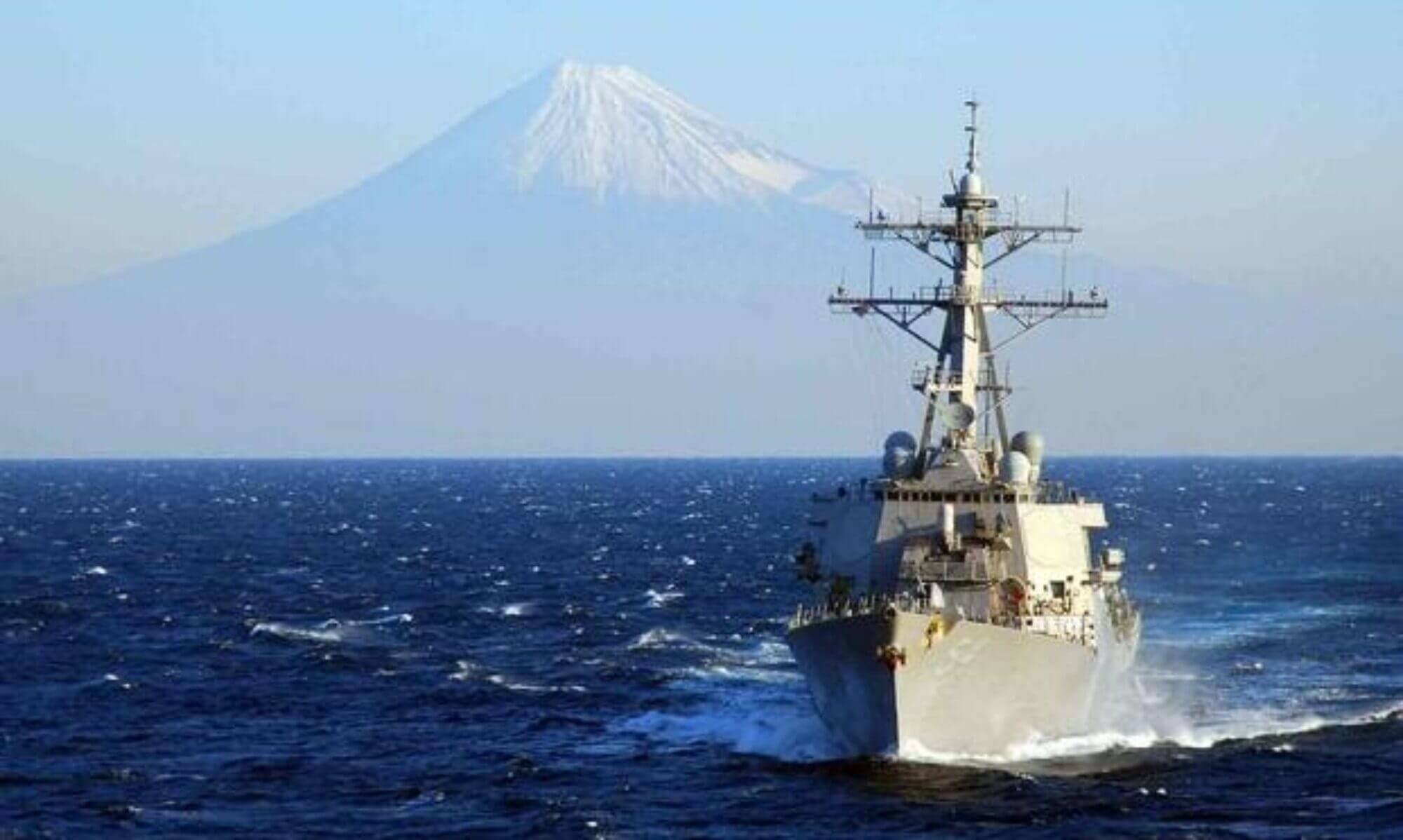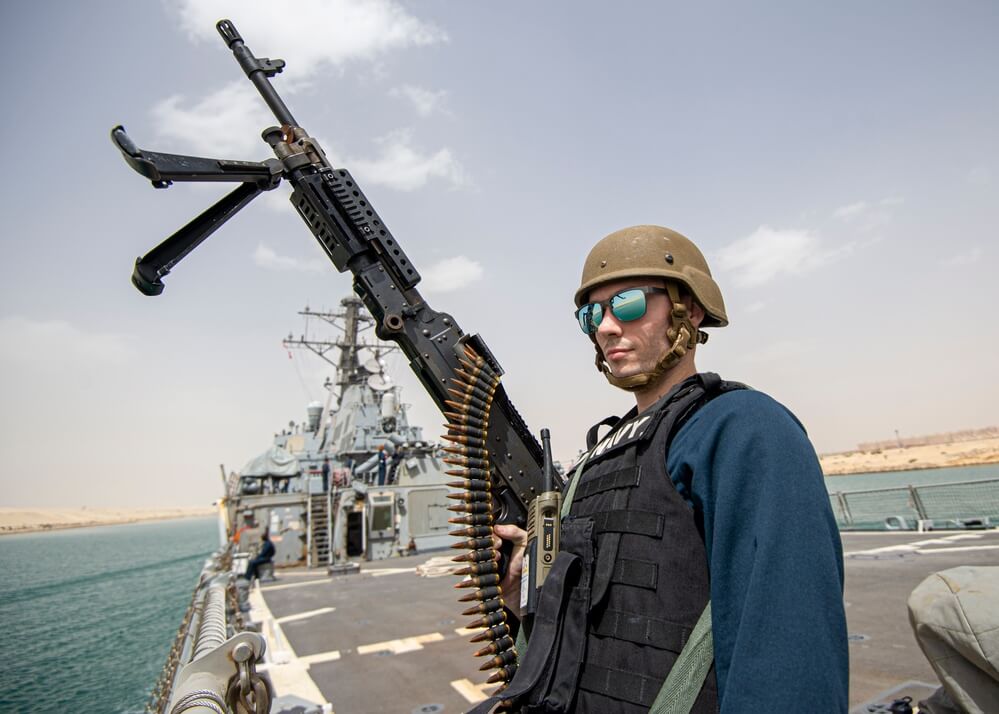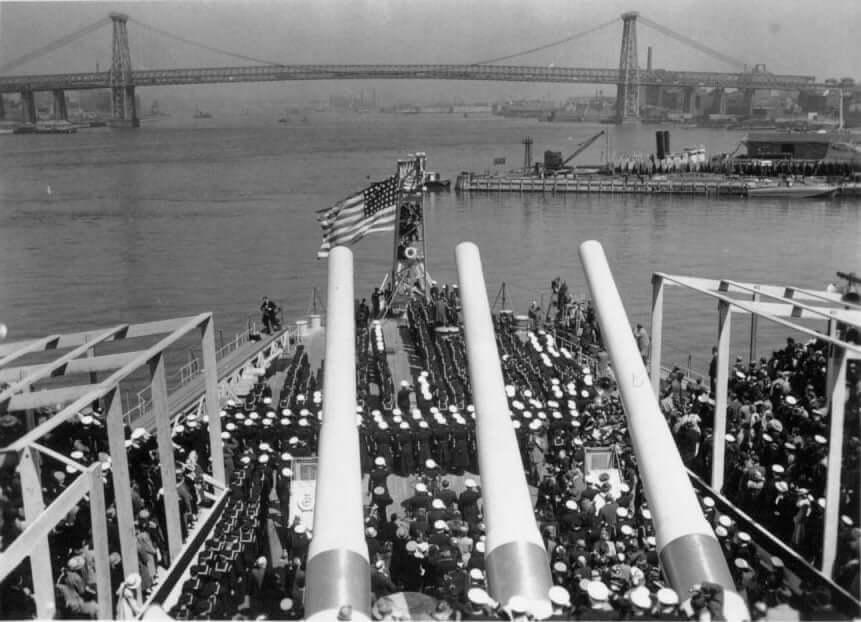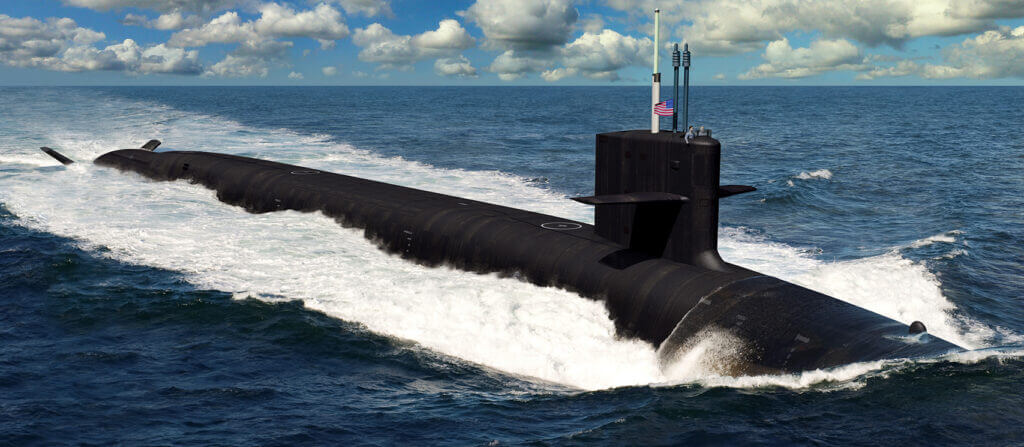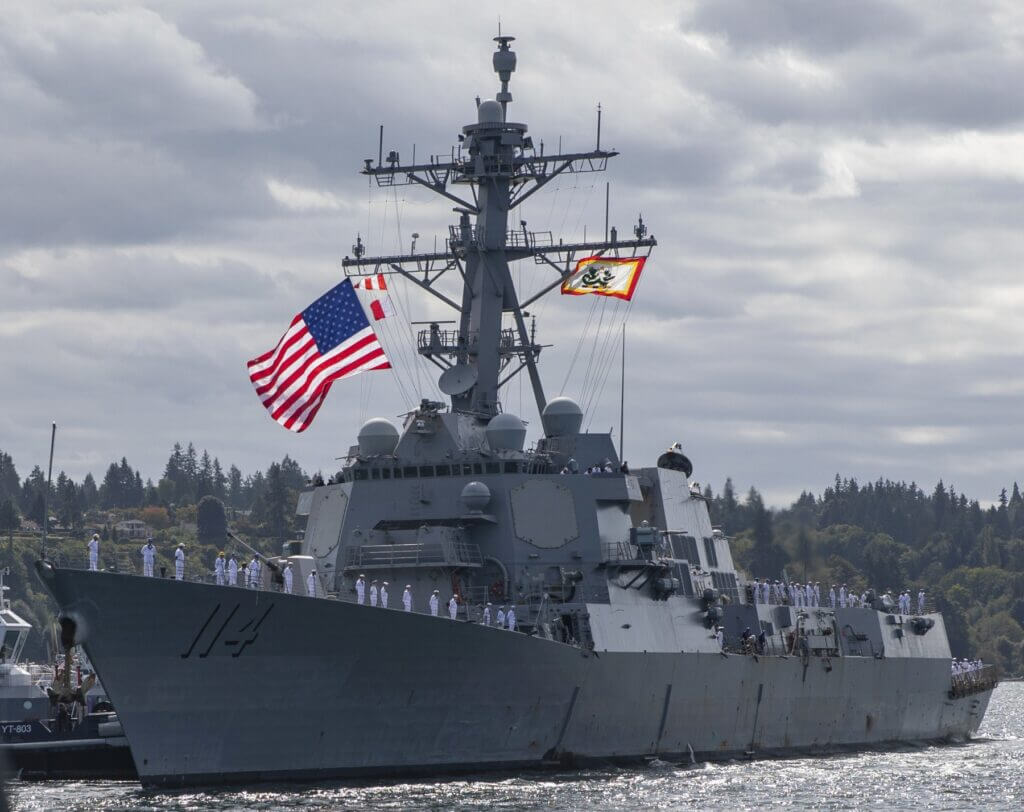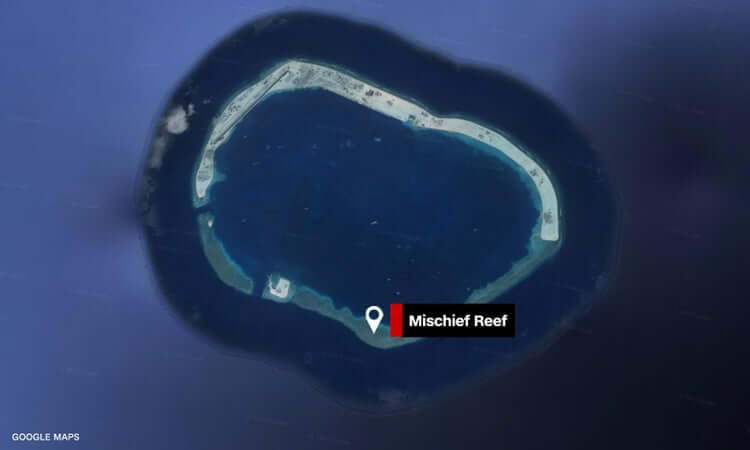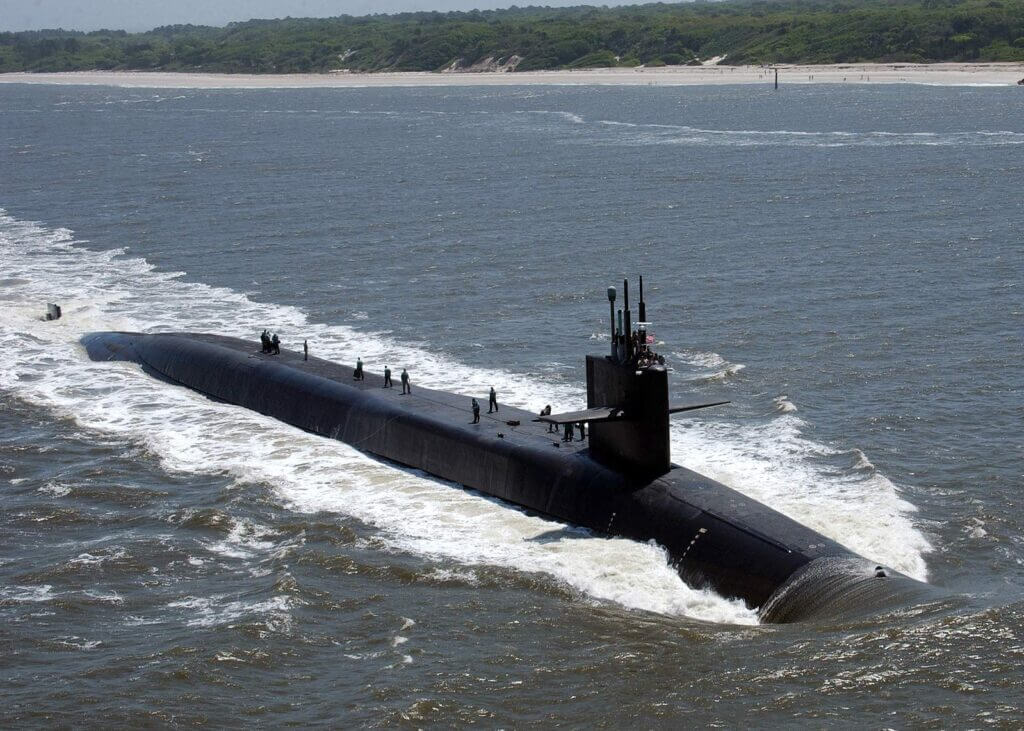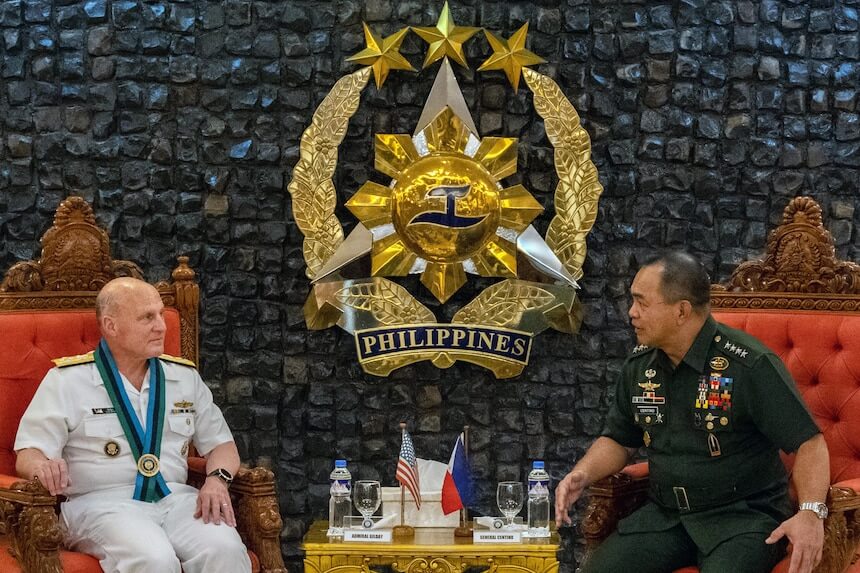Introduction
Americans for a Stronger Navy is an organization that focuses on advocating for a stronger Navy to protect American interests and promote national security and Peace Through Strength.
As part of their outreach initiatives, the US Navy hosts Navy Weeks in partnership with various organizations throughout the country.
In this blog post, we will take a closer look at the USS San Jacinto, (CG-56) an active Navy ship that is currently participating in Navy Week in Wilmington, N.C. and with pleasure and opportunity to interview Captain Christopher E. Marvin, the USS San Jacinto Commanding Officer.

USS San Jacinto, (CG 56)
Captain Christopher E. Marvin, Commanding Officer,
USS San Jacinto, (CG 56)
Captain Marvin is a native of rural northeastern Pennsylvania. He attended Pennsylvania State University graduating in 1996 with a Bachelor of Science in Wildlife Biology. In November 1997, he entered Officer Candidate School in Pensacola Florida, and was commissioned in March of 1998.
His first sea tour of duty was aboard USS JOHN YOUNG (DD-973) in San Diego, California where he served as the Deck Officer from 1999 to 2001. In November 2001, he reported to USS BLACKHAWK (MHC-58) in Ingleside, Texas as the Engineer Officer and served on BLACKHAWK from 2001 to 2003.
Following his initial sea duty tours, Captain Marvin attended The Naval Postgraduate School in Monterey, California where he earned a Master of Science in Information Systems Technology and completed Joint Professional Military Education Phase I.
In June 2006, following completion of Department Head and Tactical Action Officer training, then Lieutenant Marvin, transferred to Naval Station Pearl Harbor Hawaii and reported for duty as the Engineer Officer aboard USS CHUNG-HOON (DDG-93).
In subsequent sea tours, he served as the Engineer Officer aboard USS CHOSIN (CG-65) in Pearl Harbor Hawaii, Executive Officer aboard USS HALYBURTON (FFG-40) in Mayport, Florida and USS SOMERSET (LPD-25) in San Diego, California and most recently as Commanding Officer of USS DETROIT (LCS-7) Gold Crew in Mayport, FL.
In addition to his shore tour at the Naval Postgraduate School, Captain Marvin also served ashore on the Commander Naval Surface Force Staff in the N8 Directorate from 2009 to 2011 followed by a one-year tour of duty on the Combined Joint Task Force Horn of Africa Staff in Djibouti, as a student at the Joint Forces Staff College and most recently on the Commander Naval Surface Forces Staff serving as deputy assistant Chief of Staff for future requirements.
Captain Marvin’s awards include the Meritorious Service Medal, Joint Service Commendation Medal; Navy Commendation Medal; Navy Achievement Medal; Iraq Campaign Medal; and various other unit and service awards.
Interview with Captain Christopher E. Marvin
Question and Answer with Bill Cullifer, Founder of Americans for a Stronger Navy and Captain Marvin, Commanding Officer San Jacinto:
Q: Captain Marvin, what would you like the American public to know about the Navy’s mission today, and what they can do to help support that mission?
A: “America remains a global leader with global interests. Households and businesses throughout the United States benefit from the steady flow of resources and goods across oceans. Our modern economy depends on access to the internet, which rides upon undersea fiber-optic cables. This is a critical decade – maintaining the world’s best Navy is an investment in the security and prosperity of the United States. The rules-based international order depends upon free and open oceans. The United States Navy protects the sea lines of communication, which facilitates 98% of the world’s trade and commerce. The American people play the vital role in providing the workforce and industrial support that sends our warships to sea and is the base from which our highly intelligent, industrious and growing technology savvy Sailors enter service to their Navy and Nation. Support for local businesses and industries will effectively translate to direct material support to the increasingly complex and diverse challenges maritime security. Additionally, focus on continuing education in both technologically advanced and classical trade skills will provide the industrial-technological base that will be crucial to maintain peace through vigilance today and win any future battles that threaten our sea, land, air, and space access and interests.”
V/r,
-Chris
Captain Chris Marvin, USN
Commanding Officer, USS SAN JACINTO (CG56) “Victory is Certain”
Navy Weeks
Navy Weeks are a series of events that provide opportunities for the Navy to showcase its assets, equipment, and personnel. These programs are designed to educate Americans on the importance of naval service, increase awareness in cities that might not otherwise see the Navy at work, and showcase the Navy’s global deployment. The USS San Jacinto is currently participating in Navy Week in Wilmington, NC, and the public is invited to take a tour of the ship.
USS San Jacinto (CG-56)

The USS San Jacinto, (CG-56) is an active Navy ship that has been in commission for over three decades. It has traveled across international waters and has been involved in several operations, including firing the opening shots of Operation Desert Storm. In 2020, the ship broke the U.S. Navy record for most consecutive days at sea, with a total of 206 days. It is a formidable vessel that serves to protect American interests and promote national security.
Tours of the USS San Jacinto, (CG-56)
Tours of the USS San Jacinto will be available on Friday, April 14, from 9 a.m. to 3 p.m. The public is encouraged to visit Godwin Stadium, where a security check will occur before a bus transports visitors to the ship. Walk-ins are welcome, and visitors are only asked to bring their ID and wear closed-toed shoes.
This is a unique opportunity to see firsthand the inner workings of an active Navy ship and to learn more about the importance of naval service.
Reflecting on Navy Week in Wilmington, NC
As Navy Week comes to a close in Wilmington, NC, we reflect on the valuable opportunity it provides for the Navy to showcase its assets and educate Americans on the importance of naval service.
Our Interview with Captain Christopher E. Marvin
During our interview with Captain Christopher E. Marvin, Commanding Officer of the USS San Jacinto, we gained valuable insights into the importance of the Navy’s mission in protecting national security and promoting peace through strength. Captain Marvin emphasized the vital role played by the American public in supporting the Navy’s mission through workforce and industrial support. Additionally, he highlighted the crucial role of continuing education in both technologically advanced and classical trade skills for maintaining the Navy’s industrial-technological base, which is essential for maintaining peace through vigilance today and winning any future battles that threaten our sea, land, air, and space access and interests.
Partnership for Peace Through Strength
As an organization that advocates for a stronger Navy, Americans for a Stronger Navy recognizes the importance of a partnership between the Navy and the American public in promoting national security and peace through strength. Events like Navy Week provide valuable opportunities for the Navy to showcase its assets and educate Americans on the importance of naval service.
Gratitude for All Involved
We would like to extend our gratitude to Captain Christopher E. Marvin, Commanding Officer of the USS San Jacinto, the crew of the USS San Jacinto, and all those responsible for managing and organizing the event, including the unsung heroes behind the scenes. We thank them for their service, their dedication to promoting the mission of the Navy, and their service to our country.
Importance of Naval Service
The public was able to tour the USS San Jacinto during Navy Week, gaining a deeper appreciation for the importance of naval service in protecting American interests and promoting national security and Peace Through Strength.
